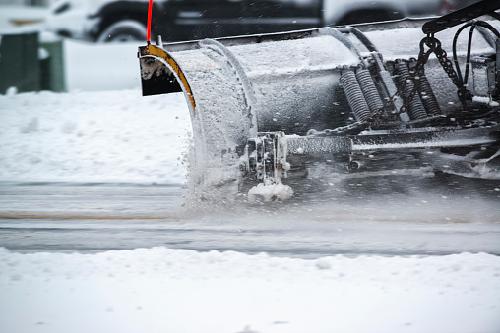Plowing city streets, your snowplow questions answered

When winter weather strikes, Sikeston residents often start to wonder about travel conditions on city streets. What residents often don’t know is there are specific methods to how the streets are plowed.
Sikeston Director of Public Works Jay Lancaster said that when the city goes into snow-fighting mode, public works consolidates with the street department, parks and recreation and building maintenance staff to make up a staff of 16 workers. They will then split into two groups and work 12-hour shifts around the clock.
“When winter weather is coming, the first thing we do is make sure all the grates are clean because the snow and ice has to melt somewhere,” Lancaster said. “And we get all of our equipment ready.”
Lancaster added that over the last few years, the city’s equipment has improved with all the city’s dump trucks eight-years-old or less. Work trucks that have been replaced are being replaced by ¾ ton work trucks designed to hold snowplows on the front.
Currently the city has four dump trucks, three pickups with plows, two backhoes and a front-end loader that are used to help clear snow.
“If the winter weather coming does not begin with significant rain, we will get out in front of the storm and pretreat by using rock salt and/or liquid salt depending on the situation,” Lancaster said. “We do not salt everywhere. We tend to salt problem areas like curves, hills, busy intersections, around schools and bridges.”
Sikeston Street Supervisor Darren Martin said the salt stops being effective at about 20 degrees. However, city workers will still put some down to help a little with traction and to help with the melting when it begins.
“If it is below 20 degrees, our best tool is the sun,” Lancaster said. “We have to have sunshine.”
Once snow accumulates to the point of 1-2 inches, crews will be called.
The community is then divided into four pieces, basically along Main and Malone and city staff is sent simultaneously to each area. Main, Malone and Salcedo, does not fall under the city’s coverage, but instead is taken care of by the Missouri Department of Transportation.
The first thing that is cleared by the city is major thoroughfares, that will include school routes given to the city by the schools.
“One of our main priorities is to try and keep businesses and schools open,” Lancaster said. “We want to keep the community alive and moving.”
Then crews will typically clear the Sikeston Municipal Airport.
“We have a lot of activity at our airport,” Lancaster said. “We have a lot of business coming in and out of our airport. Often, before we deal with residential areas, we do take a moment and hammer out the airport. In a couple hours we can knock out the airport.”
Then crews will begin working to clear residential streets, something that wasn’t done until about eight years ago. And all residential areas will be hit with no preference to one neighborhood over another.
“If you are wondering why a street in your neighborhood has been plowed and yours, one block over, hasn’t, it might simply be because it’s a school bus route,” Lancaster said. “We are getting all residential areas. It just may be 12 to 24 hours before we start hitting residential areas.”
One of the challenges the city faces when clearing residential streets if there is a significant snow, are the wind rows left by the snowplows. The excess snow can cause issues as the snow piles in front of a resident’s driveways.
“It’s an unfortunate side effect,” Lancaster said. “We apologize for the inconvenience and probably get a lot of calls from people not able to get out of their driveway because they are stuck.”
City staff also experiences this when MoDOT clears Main, Malone and Salcedo. They clear a straight path and it oftentimes covers the ins and outs to residential streets the same way. Lancaster said the city takes time, just like residents, to clear entrances and exits to streets that have been plowed into.
“We feel (resident’s) pain,” Martin added.
By shoveling 20-feet upstream of your driveway, you can avoid this. That way when the plow comes, there is nothing to push in front of your drive.
Martin added that a headache for the anyone clearing roads occurs when sleet and ice comes first and is layered under the snow. When that happens, it becomes much more difficult to clear.
Lancaster said there are also rare times when a snowplow may damage a mailbox. He said if that happens, they can call 573-475-3732.
But when a snow hits, Lancaster says to be patient and know that the city will get your street.
“As we work through priorities, we’ll get to everywhere,” Lancaster said. “But there is a method to our madness.”

 Facebook
Facebook






